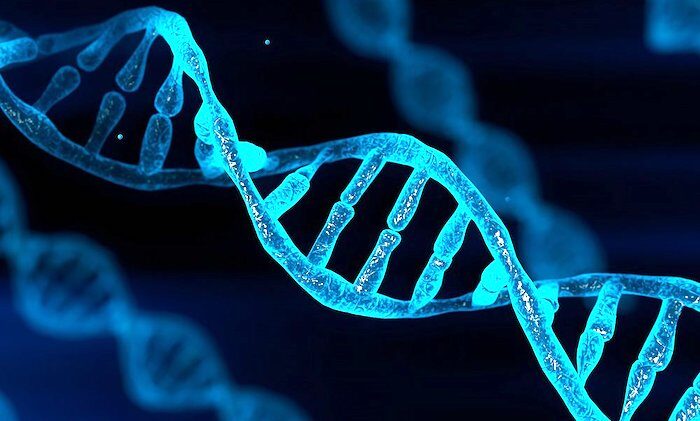Whereas Pfizer manufactures the mRNA for U.S. supply of the finished drug, BioNTech itself is responsible for manufacturing the mRNA for EU supply in partnership with European subcontractors. This does not appear to have made any difference for the issue of DNA contamination, however.
Kirchner first warned about the problem of DNA contamination of the BioNTech vaccine already in 2022 in the book Die mRNA-Maschine - 'The mRNA Machine' - which he published under the pseudonym David O. Fischer. The book contains an entire chapter on 'The DNA Contamination of BioNTech's mRNA Vaccine and its Risks' and cites European Medical Agency documents which acknowledge the problem without quantifying it.
In the meanwhile, however, Kirchner himself procured five unopened vials of the BioNTech vaccine and submitted them for analysis to the Magdeburg-based lab of Professor Brigitte König of Leipzig University Hospital. The results of Prof.'s König's analyses are summarised in the below table. Prof. König found massive DNA contamination, up to 354 times higher than the 10 nanogram per dose limit recommended by the WHO and applicable in the EU. Like Kevin McKernan, she also found full residual bacterial plasmids. The plasmids are used in the industrial production process of the mRNA ('process 2'), which differs in this respect from the process which was used to produce vaccine batches for the clinical trials of the drug ('process 1').
The table is adapted from Kirchner's August 9th letter to the German regulator, the Paul Ehrlich Institute (PEI), calling for "the immediate withdrawal of BioNTech's Comirnaty mRNA vaccine from the market" on account of the DNA contamination. (The letter is attached to Kirchner's September 16th letter to German Minister of Health Karl Lauterbach, which is available here.)
In the same August 9th letter, Kirchner also criticised the Paul Ehrlich Institute for failing to perform adequate quality control of the vaccine before approving batches for release. As noted in the letter, and also touched upon in my previous articles here, here and here, the PEI is responsible for batch release of the BioNTech-Pfizer vaccine not only for Germany but the entire EU.
Citing one of the PEI's own publications, Kirchner notes in particular that it does not test the purity of the vaccine solution:
Instead, a "visual inspection" is conducted, whose usual standard, looking at the vaccine solution on a white and on a black background, only allows crude contaminants to be identified: like, for example, if a bug fell into the vaccine when the vial was being filled. DNA or protein contamination cannot be identified in this way. It appears that the required testing of the purity of the solution was systematically not done.In an interview with the German edition of the Epoch Times, Kirchner notes that whereas the PEI did not conduct advanced testing for contaminants of the BioNTech vaccine - even though the EMA had already identified the risk of DNA contamination in the industrial production process - it did require such testing for the Novavax COVID-19 vaccine, which is based on more traditional recombinant protein technology:
A vaccine [Novavax] which can be very purely produced was tested for contamination and the mRNA vaccine, which cannot be purely produced at all for mass consumption, that one is not tested. So, one has to wonder: why is that?As I have written about before, there is a longstanding, collaborative relationship between the German regulator - the Paul Ehrlich Institute - and the firm BioNTech. Questions are now being asked about how collaborative it is.
About the Author:
Robert Kogon is the pen name of a widely-published journalist covering European affairs. Subscribe to his Substack and follow him on X.Translations from the German by the author.





[Link]
A quote from the above link.
" A possible and extremely terrifying answer came with the recent discovery of McKernan and colleagues (4). In the vaccine production process, the plasmid-DNA templates must be removed from the generated mRNA before the latter is packaged into LNPs.. Otherwise, plasmids will also end up in the fat globules. McKernan discovered that this crucial step of removing plasmid-DNA had not been assiduously undertaken. Huge amounts of plasmid-DNA were found in packaged form that guaranteed their successful delivery to cells, where they would be able to function for extended time periods."
"Cellular uptake of a functional foreign chromosome equates with nothing less than genetic alteration. This must be the fate of humans who are injected with packaged bacterial plasmids. In addition, expression of the alien gene will invoke immune attack on the producing cells. Continued and prolonged production of the non-self protein will intensify the organ damage and inflammation. This will happen throughout the body. Blood clots will form as vessels get injured and tissues will die for lack of oxygen. The heart is one organ that cannot replace dead cells. Who has not heard of the mysterious sudden cardiac deaths that are occurring around the world? They are only the tip of an iceberg. Vaccine-induced heart disease has entered the daily agenda of young and old. The second organ that cannot replace its dead cells is the brain. Depending on where vaccine damage is done, any neurological and psychiatric affliction may follow."